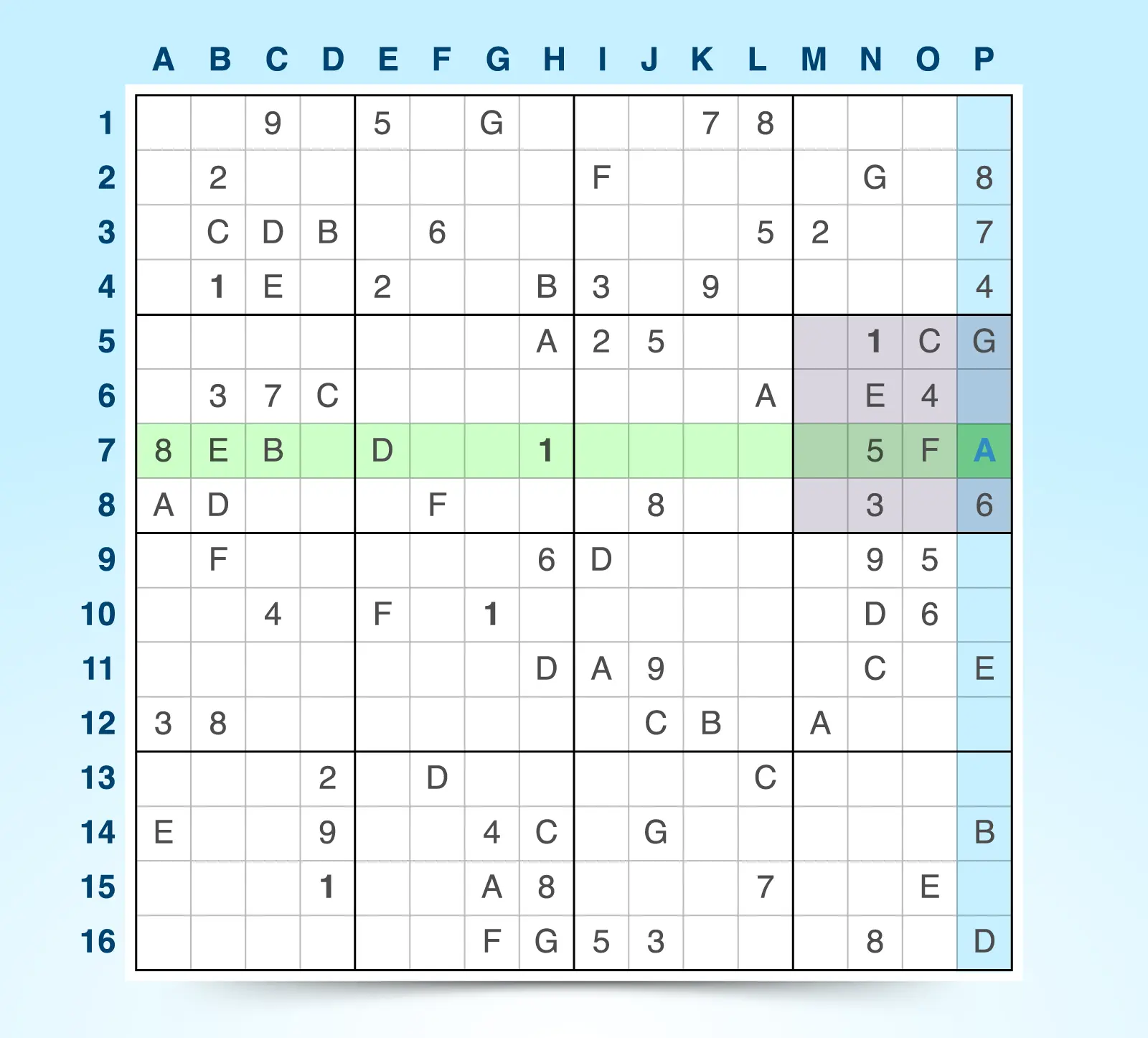How to Play 16x16 Sudoku
To solve a 16x16 Sudoku puzzle, you must fill in all 256 cells using the characters 1, 2, 3, 4, 5, 6, 7, 8, 9, A, B, C, D, E, F, G. Each character can only appear once in every row, column, and 4x4 block.
For example, P7 must be A because As are already present in rows 5, 6, and 8 and in column M. By process of elimination, P7 is the only cell within that block that can house an A.

This large variation is also known as Hexadecimal Sudoku, Hexadoku, or Super Sudoku.
To fill out the grid, select a number or letter under “Choose a number, and place it in the grid above.” Then click the cell that character belongs to. If you’d like to add pencil marks showing potential candidates, click the box next to “This number is a possibility” and then select the character and relevant cell.
You can also fill in answers by clicking on the appropriate cell and typing the character with your keyboard.
If you get stuck, you can use the Check Moves button to verify that all your answers are correct or the Show Solution button to view the answer for each cell.
16x16 Sudoku Tips
The 16x16 puzzles are challenging because of their size. It takes patience to work through all the empty cells and eliminate incorrect candidates. To help solve this logic puzzle, use the following tips.
- Start in areas with a lot of givens. Givens are the numbers already placed in the puzzle. Starting in rows, columns, or blocks with multiple givens makes the process of elimination easier.
- Work sequentially through missing characters. It’s essential to be methodical as you look for answers. For example, start by finding all 1s answers and candidates, then move on to 2s. Looking for solutions at random is more difficult since it increases the chances of missing patterns or making mistakes, while a systematic approach helps you track progress and spot opportunities more easily.
- Use the last possible number strategy. Choose a cell and look at all the characters that exist in the row, column, and 4x4 block that intersect that cell. If there is only one character missing, that is the solution.
- Use elimination strategies. Look at your pencil marks and use elimination strategies like hidden pairs and naked triples to minimize potential candidates.
- If you get stuck, move to a different area or take a break. It can be frustrating if you haven’t found a solution in a while. Shifting your attention to another area of the puzzle can reveal patterns or solutions you may have previously missed. If the entire puzzle feels overwhelming, stepping away for a short break can help clear your mind and give you a fresh perspective when you return.
- Check your answers. Regularly review the characters you've placed to ensure they are correct. Look for duplicates in rows, columns, or blocks. Catching mistakes early makes it easier to fix them before they lead to bigger issues later in the puzzle.
This giant Sudoku game is a great way to pass the time and use your problem solving skills. However, if you prefer standard Sudoku, we also have multiple difficulty levels available for free. Beginners can check out our Easy Sudoku puzzles, while more advanced players may enjoy Hard Sudoku or Expert Sudoku. We even offer free Sudoku printables if you like to take your puzzles offline.